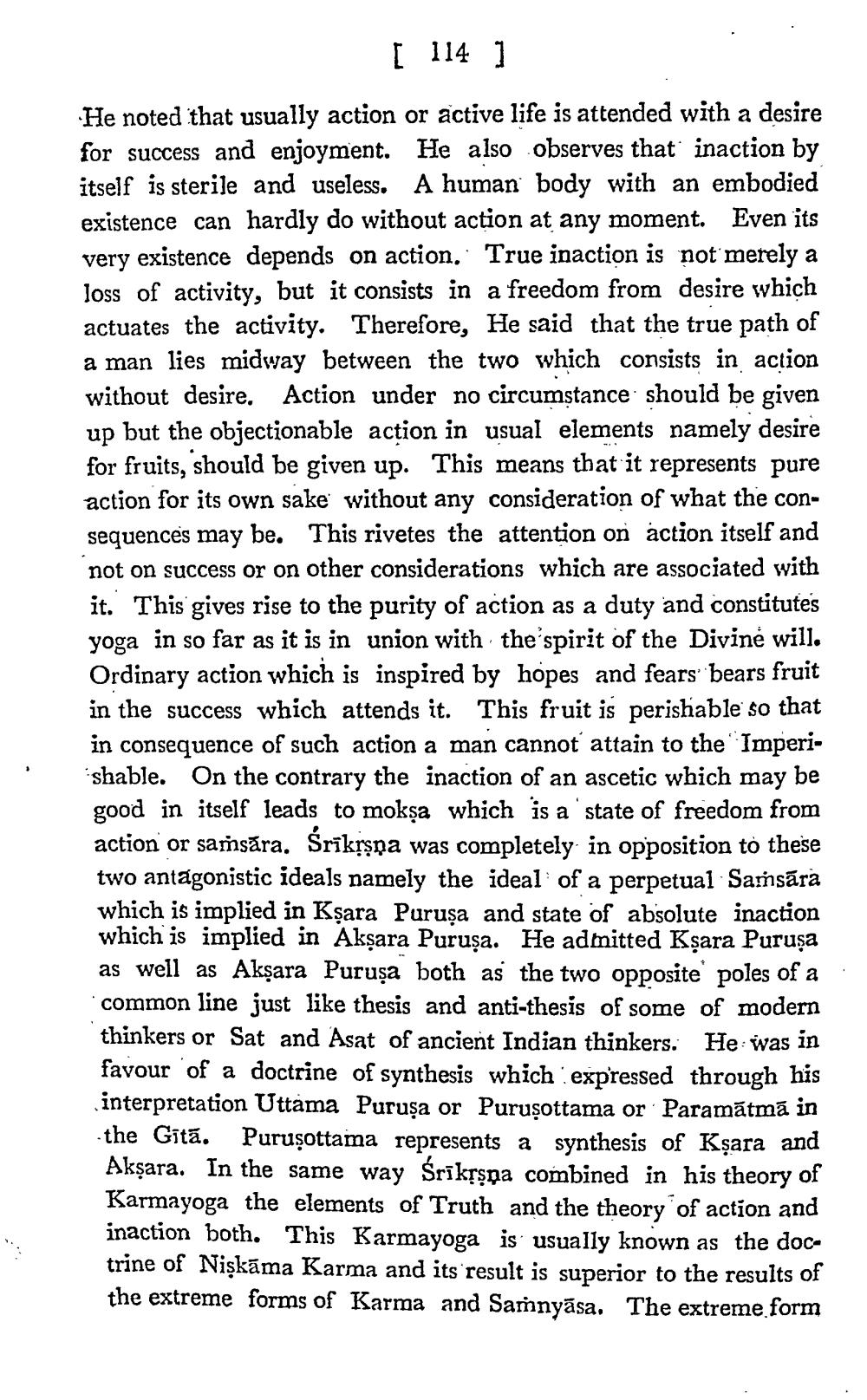________________
[ 114
)
He noted that usually action or active life is attended with a desire for success and enjoyment. He also observes that inaction by itself is sterile and useless. A human body with an embodied existence can hardly do without action at any moment. Even its very existence depends on action. True inaction is not merely a loss of activity, but it consists in a freedom from desire which actuates the activity. Therefore, He said that the true path of a man lies midway between the two which consists in action without desire. Action under no circumstance should be given up but the objectionable action in usual elements namely desire for fruits, should be given up. This means that it represents pure action for its own sake without any consideration of what the consequences may be. This rivetes the attention on action itself and not on success or on other considerations which are associated with it. This gives rise to the purity of action as a duty and constitutes yoga in so far as it is in union with the spirit of the Divine will. Ordinary action which is inspired by hopes and fears bears fruit in the success which attends it. This fruit is perishable so that in consequence of such action a man cannot attain to the Imperishable. On the contrary the inaction of an ascetic which may be good in itself leads to mokșa which is a state of freedom from action or samsāra. Śrīkrypa was completely in opposition to these two antagonistic ideals namely the ideal of a perpetual Samsāra which is implied in Kșara Purușa and state of absolute inaction which is implied in Aksara Puruşa. He admitted Ksara Puruşa as well as Akşara Puruşa both as the two opposite poles of a common line just like thesis and anti-thesis of some of modern thinkers or Sat and Asat of ancient Indian thinkers. He was in favour of a doctrine of synthesis which expressed through his interpretation Uttama Purușa or Puruşottama or Paramātmā in the Gītā. Puruşottama represents a synthesis of Kșara and Akşara. In the same way ŚrīkȚşņa combined in his theory of Karmayoga the elements of Truth and the theory of action and inaction both. This Karmayoga is usually known as the doctrine of Nişkāma Karma and its result is superior to the results of the extreme forms of Karma and Samnyāsa. The extreme form




